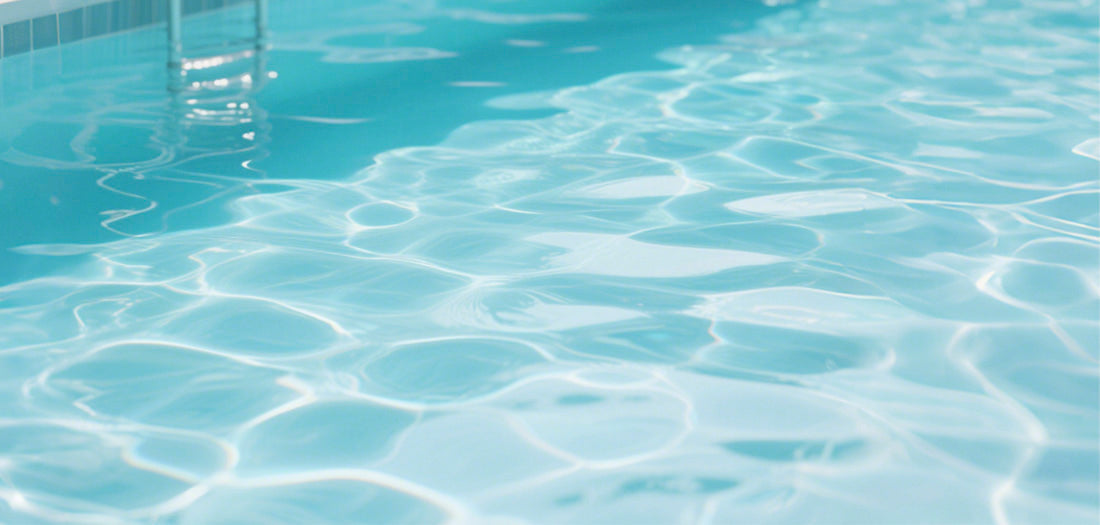
How much softer the water is with a mineral system!
Share
Keeping your pool water clean and inviting doesn’t have to mean dealing with the harsh effects of excessive chlorine. Just like your body benefits from essential minerals, your swimming pool can too! A mineral-based pool system offers a gentler way to keep your water fresh and safe while reducing reliance on traditional sanitizers.
Before making the switch, let’s explore how mineral pool systems work, their advantages, and potential downsides, so you can decide if it’s the right fit for your backyard oasis.
What Exactly is a Pool Mineral System?
A pool mineral system is an alternative sanitation method that helps keep your water clear and bacteria-free. Instead of relying solely on chlorine or bromine, these systems utilize minerals—primarily silver and copper—to inhibit bacteria and algae growth.
Wait—are silver and copper minerals or metals? Technically, both! Silver has natural antibacterial properties and has been used to purify water since ancient times. Copper acts as a powerful algaecide, which is why it’s a common ingredient in many pool and spa treatments. Some mineral systems also incorporate zinc, known for its antibacterial benefits, and limestone, which helps stabilize pH levels.
While mineral pool sanitizers offer a natural approach, they do come with some considerations. Let’s break down the pros and cons.
Perks of Using a Pool Mineral System
Softer, Silkier Water
If you’ve ever felt the drying effects of a heavily chlorinated pool, you’ll love the difference with a mineral system. The water feels smoother and less abrasive on your skin and hair. Plus, your favorite swimsuit won’t fade as quickly!
Less Strain on Pool Equipment
Over time, chlorine can take a toll on your pool’s pump, filter, and other components. Since mineral systems reduce the amount of chlorine needed, your equipment may last longer and perform more efficiently.
Lower Chlorine Demand
Mineral sanitizers allow you to cut back on chlorine usage by about 50%, minimizing strong chemical odors and reducing the formation of chloramines—the compounds responsible for that unmistakable "pool smell."
Things to Consider Before Switching
You Still Need Some Chlorine or Bromine
While minerals help control bacteria and algae, they aren’t a complete solution. You’ll still need to maintain a low level of chlorine (0.5 ppm) or bromine (1 ppm) to fully sanitize your pool.
Potential for Staining
Copper can oxidize over time, leading to greenish stains on pool surfaces. If your water source already contains high levels of copper, the risk of staining increases. A metal sequestrant can help prevent discoloration.
Initial Costs
While mineral systems may reduce your overall chlorine expenses, they do require an upfront investment in mineral cartridges or dispensers. However, since you’ll use less chlorine, your costs may balance out in the long run.
Different Types of Pool Mineral Systems
1. In-Skimmer Mineral Cartridges
These simple devices are placed in the pool’s skimmer basket, allowing minerals to disperse as water flows through. They typically last up to six months and work in pools up to 30,000 gallons.
2. Floating Mineral Dispensers
A low-maintenance option, these float on the water’s surface and slowly release minerals. Some models even contain a built-in chlorine cartridge and flip over when it’s time for a refill.
3. Inline Mineral Systems
Installed directly into your pool’s plumbing, inline systems automatically release minerals as water circulates. While they require more setup, they integrate seamlessly into your existing pool system.
How to Get Started with a Mineral Pool System
1. Test and Balance Your Water
Before adding minerals, ensure your pool water is balanced:
- Alkalinity: 100–150 ppm (ideal: 125 ppm)
- pH: 7.4–7.6 (ideal: 7.5)
- Calcium Hardness: 175–275 ppm (depends on pool type)
2. Add Minerals
Install your mineral cartridge or dispenser according to the manufacturer’s instructions. Once in place, the minerals will start working immediately.
3. Supplement with Chlorine or Bromine
To maintain proper sanitation, keep chlorine at 0.5 ppm or bromine at 1 ppm. Regularly test and adjust as needed.
4. Shock When Necessary
Use a chlorine shock treatment initially to clear bacteria and organic contaminants. After that, non-chlorine shock is a great option to maintain cleanliness without disrupting mineral effectiveness.
Is a Mineral Pool Right for You?
If you’re looking for a more natural way to sanitize your pool while cutting back on harsh chemicals, a mineral system is worth considering. You can start small with an in-skimmer or floating dispenser to see how you like it before committing to a full inline system.
Once you experience the silky water and reduced chlorine smell, you might wonder why you didn’t make the switch sooner!
Happy swimming!
